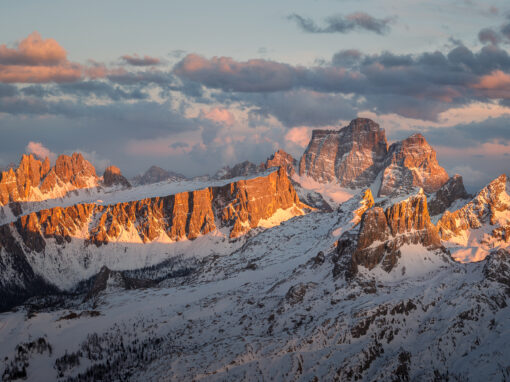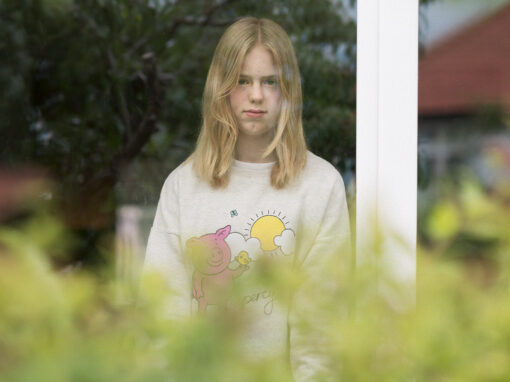I feel jaded. I really do. I constantly try to pay attention to what is going on and keep abreast of the latest news. Frankly, it all stinks as badly as I can ever remember. The continuing war in Ukraine is almost as grim a news story as one can imagine. Europe is in the grips of a climate apocalypse (and I do not think that is hyperbole). COVID is not going away, but it almost seems as though we have all forgotten about it. The cost-of-living crisis is beyond a joke. It seems that every time I go to the supermarket the price of some essential item has increased by another five or ten percent. To deal with the rampant inflation central banks have begun raised interest rates which is going to inflict a lot of pain mostly on people who bear precisely zero responsibility for the current mess. If I sound like a grumpy old man, I am. It is probably a good job that I am writing this rather than speaking to you. A spoken rant would be louder and longer than anything I could, or should, write here. I am confident that you would have already told me to shut up, or slapped me in the style of Airplane, where, in a scene unlikely to be repeated in nowadays, one of the cabin crew slaps a hysterical passenger to help her “pull herself together”. Leslie Neilson soon follows with a double whammy before the camera pans back to reveal other passengers, including a nun, a man wearing boxing gloves, another carrying an iron bar, and a well-to-do woman holding a gun, queuing up to “assist” the panicked woman.
Thankfully, last week brought a moment of relief when NASA released the first set of images from the James Webb Space Telescope. Just like when Howard Carter first peered into Tutankhamun’s tomb and declared that he saw “wonderful things”, treasure is revealed in these photographs: our Universe in stunning detail.
When looking upon these photographs, my problems, issues, and concerns become smaller, more trivial. This is not to say that the things you and I worry about are unimportant. Everything single thing that affects our collective well-being is important to us, but, in the grand scheme of the Universe, they are not. We, and here I mean all humans and everything on planet Earth, are mere trivialities in the face of the vastness of the cosmos. It is a cliché to state how small these images make the viewer feel, but it is also true.
There can be little doubt about both the quality and importance of these photographs, three of which I am delighted to feature in this column. From the early attempts at the craft by Joseph Nicéphore Niépce with his heliograph on a pewter plate, to William Henry Fox Talbot and Louis Daguerre’s first truly recognisable photographs, through the landscapes of Watkins, Weston, Adams, and Godwin, to the documents of Evans, Lange, Cartier-Bresson, and Doisneau, past the colours of Eggleston, Leiter, and Haas, we have reached the point where humanity has produced its most remarkable images yet.

My favourite touch in NASA’s release of the images was the fact that the first wonderous view mirrored one of the Hubble’s most iconic photographs: the Ultra Deep Field View from 2003/4. This cannot have been an accident, and I think it is just what those of us waiting to see the photographs needed: proof that all the years of research, development, and manufacture have paid off handsomely.
This photograph has already spawned at least one splendidly comic variation on a meme: Distracted Boyfriend, otherwise known as Man Looking at Other Woman. In the new meme, his girlfriend, on the right, has been replaced by the Hubble photograph. His distraction, on the left, has been replaced by the James Webb photograph. This works so well because it is true. I looked at the Hubble image in awe and wonder. I found so much in the image that I wrote about it in length in an edition of this column that examined the previous generations of NASA’s photographic gifts. Looking at the new image in comparison to the original reminds me of when I compare photographs taken 15 years ago on my first DSLR, the ancient Olympus E510 camera, to ones taken on my Sony A7rIV. They were fine for the time, but there is absolutely no comparison in terms of quality and detail.

On one of my social media feeds yesterday, a video popped up from Joe Rogan. As regular readers of this column can probably guess, he is not someone that I like to spend any time listening to and I would normally skip on by, but in this short video, he was talking to British professor of particle physics, Brian Cox, who is possibly the coolest man on the planet. Not only is he a brilliant scientist, author of multiple successful books, presenter of a whole heap of BBC science programmes, and rock star, having had a number one hit as part of the group D:Ream with the impossibly catchy Things Can Only Get Better, he also did a voiceover for children’s TV show Postman Pat. In the video, from 2019, Cox was discussing the possibility that we might be the only intelligent life in the whole of the Milky Way, and how this means that Earth is the only place in the galaxy that has meaning because meaning is something we create; this makes us, with our fragile bodies and miniscule lifespans, special.
These photographs might look outwards into the Universe, but, for me, they insist that I consider the place where the images were made: our own world. When I look at these photographs, it is obvious that Cox is right. Humanity is special, but it is not just humanity. It is all the diverse life on this wonderful planet. Whilst these magical pictures show a miniscule fraction of a cosmos that might be teeming with life, what we have here will not be replicated anywhere else. This should be clear to everyone regardless of their spiritual belief or non-belief.
One of my intellectual heroes, Carl Sagan, noted that “astronomy is a humbling and character-building experience” and that we should “preserve and cherish” our home planet. If we as a species wish to go out and explore the Universe so eloquently represented in these photographs, it is time for serious and meaningful change here at home. I hope for all our sakes you agree.





Cynthia Gladis
July 24, 2022 at 17:25
Loved this. I’ve always been a lover of all things space (including science fiction), and Sagan is also one of my heroes. Very enjoyable, and thought-provoking article, Rob. Now I must go and look up the Hubble photo.
Rob Wilson
July 26, 2022 at 18:04
Thank you Cynthia!